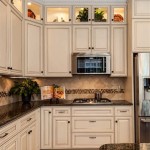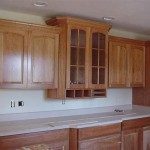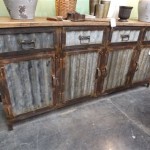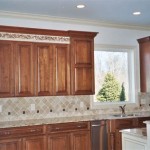The Fastest Way to Paint Inside Kitchen Cabinets
Painting the inside of your kitchen cabinets can be a daunting task, but it doesn't have to be a drawn-out process. With the right tools and strategies, you can achieve a fresh, new look for your cabinets in a relatively short amount of time. This article provides a step-by-step guide to painting the inside of your kitchen cabinets quickly and efficiently.
Step 1: Preparation is Key
As with any painting project, proper preparation is crucial for achieving a smooth finish. This step sets the foundation for a speedy and successful paint job.
The first step is to
empty your cabinets completely.
This includes removing all dishes, utensils, food items, and any other belongings. It’s important to do this in a way that keeps the contents organized and protected.Next,
remove all hardware.
This includes hinges, drawer pulls, and cabinet knobs. You can use a screwdriver or a wrench depending on the type of hardware. Be sure to store the hardware safely to avoid losing any pieces.Once the cabinets are empty and hardware is removed, you can begin
cleaning the surfaces.
Use a mild dish soap and warm water to remove any grease, grime, or food residue. Allow the cabinets to dry completely before proceeding.Next,
repair any cracks or holes
using wood filler. Apply the filler according to the manufacturer’s instructions and let it dry completely. Once dry, sand the area smooth to create a seamless surface.Finally,
cover the surrounding areas.
This step involves taping off any areas you don't want to paint, such as walls, countertops, and floors. Use painter's tape and plastic drop cloths to protect these areas from paint splatters.Step 2: Primer for a Smooth Finish
Priming is essential for a smooth and even paint finish. Primer provides a base for the paint to adhere to and helps to prevent colors from bleeding through. This step ensures a durable and aesthetically pleasing finished product.
Choose a
primer specifically designed for cabinets.
These primers are often formulated to adhere to glossy surfaces and provide a smooth finish. Avoid regular primer, which may not offer the same level of adhesion and durability.Apply the
primer using a brush or roller.
If you're using a brush, use long, even strokes to ensure that the primer is evenly distributed. If you're using a roller, use a high-quality roller cover for a smooth finish. Let the primer dry completely before proceeding to the next step.Step 3: Choosing the Right Paint
Selecting the right paint is crucial for achieving a durable and long-lasting finish. The type of paint you choose influences the durability, finish, and overall look of your cabinets.
Consider using a
paint specifically designed for kitchen cabinets.
This type of paint is typically formulated to withstand heat, moisture, and heavy use. It will often offer a durable finish that can withstand the wear and tear of everyday use.Choose a
paint finish
that complements your kitchen design. It should be a finish that you can easily clean and maintain. Popular finish options for kitchen cabinets include satin and semi-gloss finishes. Satin offers a subtle sheen while semi-gloss provides a high-gloss finish that is easy to clean.Step 4: Painting the Cabinets
This is where your patience comes in. It's important to take your time to ensure that your cabinets are painted evenly and thoroughly. With a little practice, you can quickly achieve a professional-looking finish.
Start by painting the inside of the cabinets.
Use a brush to reach into corners and crevices, ensuring you cover all areas. Then, use a roller to apply the paint evenly. Let the first coat dry completely before applying the second coat.Paint the edges and trim
using a brush. This will ensure that the paint is applied smoothly and evenly. Apply multiple coats to ensure a smooth and finished look.Let the paint dry completely before proceeding to the next step. This drying time will vary depending on the type of paint used. Consult the manufacturer’s instructions for the recommended drying time.
Step 5: Final Touches
Once the paint has dried completely, you can add the finishing touches to your kitchen cabinets. This final step completes the transformation of your cabinets, bringing them to life with a fresh and updated look.
Reinstall the hardware.
This includes hinges, drawer pulls, and cabinet knobs. Ensure you use the right screws and install the hardware securely.Clean the surface.
Once the hardware is installed, use a damp cloth to wipe down the cabinets and remove any dust or debris. This will leave your cabinets looking their best.
How To Paint Inside Kitchen Cabinets In 7 Steps Benjamin Moore

How To Paint Inside Kitchen Cabinets Let S Furniture

How To Paint Unfinished Cabinets Houseful Of Handmade

How To Paint Kitchen Cabinets A Step By Guide Confessions Of Serial Do It Yourselfer

Should You Paint The Inside Of Cabinets

How To Paint The Inside Of Your Cabinets Kitchen Old Painting

How To Paint Kitchen Cabinets In 7 Simple Steps

What Color Should You Paint The Inside Of Kitchen Cabinets

How To Paint Kitchen Cabinets Cottage Style

Painting Cabinets How The Pros Do It Paper Moon
Related Posts








